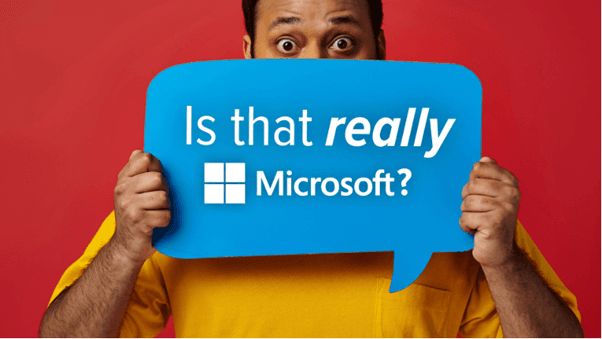
Right? Most likely you opened the email sent from Microsoft without hesitation or hesitation.
Microsoft is an esteemed brand. They are one of the largest and most dependable tech companies worldwide.
What happens if the email you received does not originate from Microsoft?
Cyber criminals use trusted brands such as Microsoft to deceive victims. According to reports, Microsoft is the company most frequently impersonated around the world.
According to a new study, 36% of brand related phishing attacks that took place early 2025 involved impersonating Microsoft.
Google and Apple were closely trailed, accounting for more than half of all phishing scams worldwide.
What's new and how can your business protect itself?
Let's first briefly address what phishing actually entails.
Phishing occurs when criminals send fraudulent emails, text messages or phone calls purporting to come from legitimate businesses that look legitimate to consumers. You should remain alert of this risk.
These scams aim to trick you into clicking on malicious links, opening attachments or providing sensitive data such as passwords, credit card numbers or even your entire identity.
When this occurs, the consequences can be catastrophic: stolen funds, compromised systems and confidential data leakage will have devastating repercussions for your business.
Phishing emails have evolved exponentially over time; now there are fewer links with suspicious spelling and bad grammar that lead to scammers' scam emails.
Scammers use fake logos that look exactly like the real thing and replicate websites to appear just like the genuine website of Microsoft, Google or Apple. Even their email addresses can be falsified to appear authentic.
Researchers have recently noted an increase in fraudulent websites purporting to be Mastercard, in order to convince people into giving out their card details.
This trend demonstrates how cyber criminals continue to find new methods of deceiving the public.
How can you verify if an email from Microsoft was really sent by them or not?
Slow down and remain alert.
Microsoft emails should never pressure you into taking immediate action by using phrases like, "Click here now or your account will get locked". Any such language should serve as a red flag.
Check the email address of the sender carefully. While it might appear correct at first glance, closer examination may reveal small inaccuracies - for instance "micros0ft.com" instead of "microsoft.com". Cyber criminals rely on you not noticing these minute details.
Whenever in doubt, do not click any links contained within an email. Instead, open your browser and manually enter the website address instead; this is always safer.
Avoiding an attack may seem tedious, but the aftermath can be worse.
Phishing scams will only become more convincing over time. Therefore, it's vitally important that:
Stay Alert Cyber security is paramount. Protective measures such as multi-factor authentication may provide additional layers of defense; simply using one form of identification isn't enough!
Keep this in mind: the more recognizable and trusted a brand is, the easier it will be for scammers to target them. Be wary of emails appearing to come from Microsoft; these could contain scammers masquerading as sheep-shearers.
We can assist your team and you to stay more secure against these phishing scams. Reach out!





